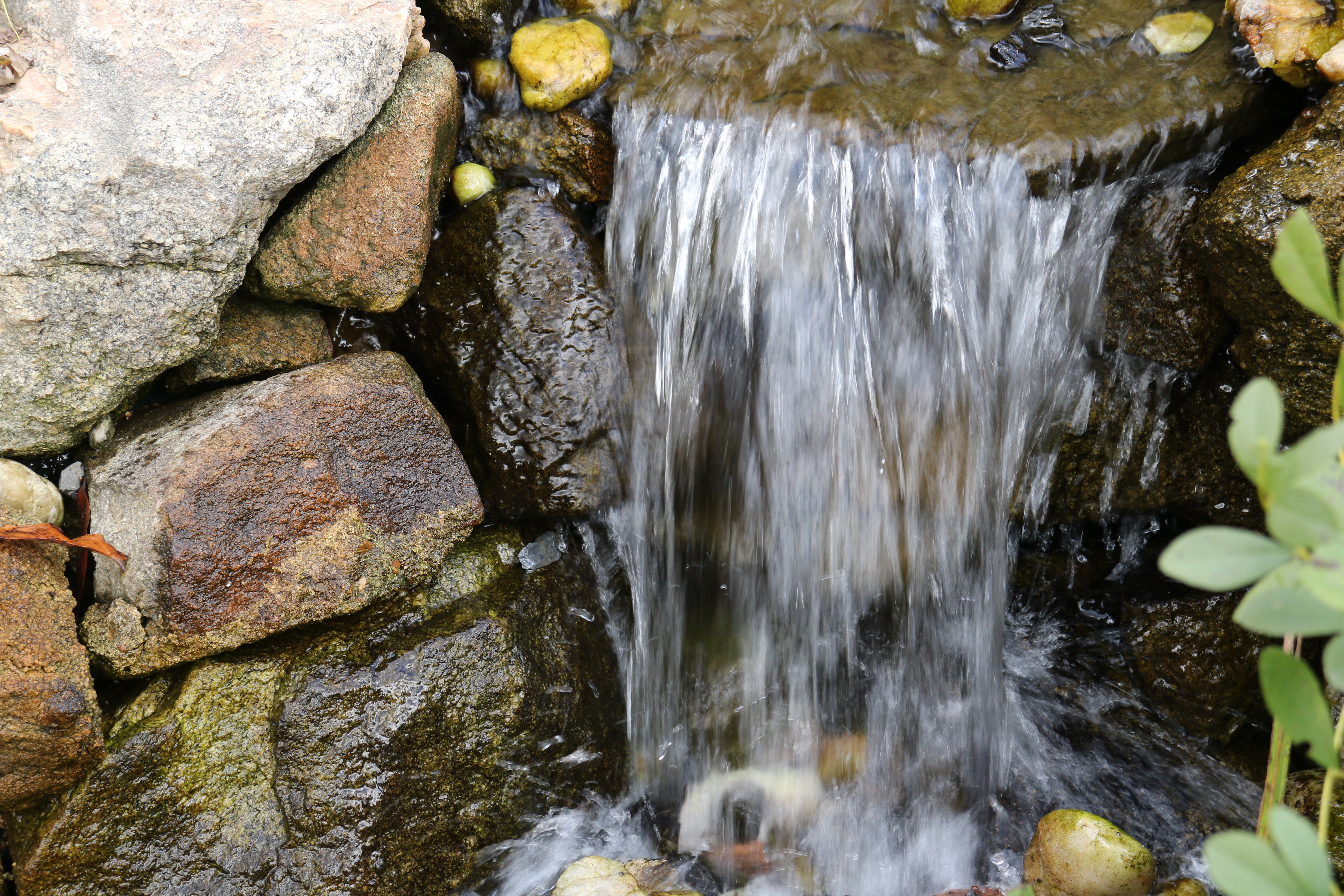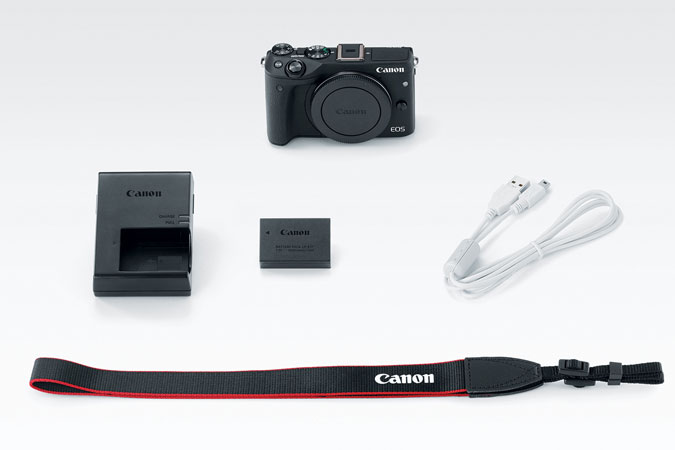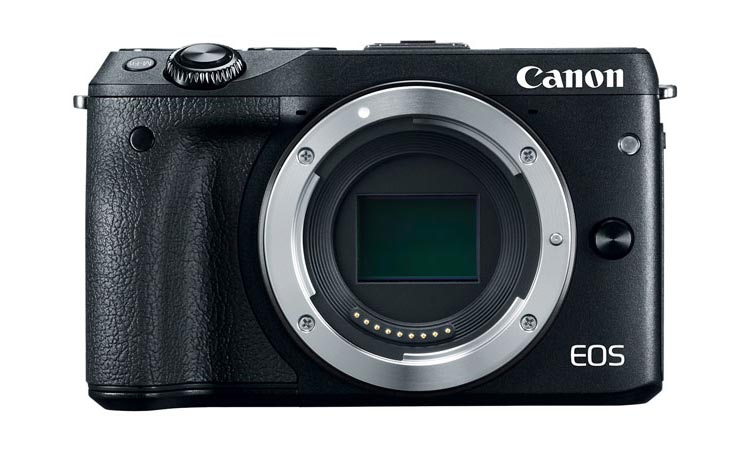Tom's Guide Verdict
The Canon EOS M3 offers good image quality in a compact design, but there are better mirrorless cameras in this price range.
Pros
- +
Solid image quality
- +
Compact and comfortable design
- +
Adjustable-angle touch-screen LCD
- +
Wi-Fi/NFC
Cons
- -
Sluggish performance
- -
EVF (electronic viewfinder) is optional
- -
Limited (but growing) dedicated EF-M lens selection
Why you can trust Tom's Guide
Canon was a little slow out of the gate with its line of mirrorless cameras. However, with the release of the EOS M3 ($799 with kit lens), Canon seems to be moving more seriously into the mirrorless space. Built around the same 24-MP sensor as the Canon EOS T6i DSLR and using the same Digic 6 image processor, the new M3 improves upon its predecessor with features that will appeal to point-and-shooters and amateurs who want more than just the basic controls offered by the entry-level M10 ($599). And those are just two updates that make the M3 superior to its predecessor, but is it good enough to compete with the comparably priced Sony a6000 or the Olympus OM-D E-M10?
Design: Comfortably Compact
Available in black or white, the M3 is nicely compact at 4.4 x 1.7 x 1.7 inches, with a fully loaded weight of 12.9 ounces (with battery pack and SD card). The body is solidly built over a magnesium alloy frame. The camera is comfortable to hold and use, thanks to a well-designed grip. Depending on the size and weight of the attached lens, one-handed shooting is a breeze.
An optional electronic viewfinder is available (EVF-DC1; $299.99) and can be attached to the hot shoe, but it's pricey. Without it, the M3’s 3.0-inch, 729 x 480 pixel, 1.04 million dot touch screen is the only option for composing images. The touch screen offers both touch shutter and touch focus; the touch shutter can be turned off (my personal preference), but overall I liked using the touch focus. It wasn't as responsive as I had hoped, but was fast enough for most subjects.
The touch screen can be tilted up to 180 degrees and down to 45 degrees, perfect for low-angle or overhead shots. The former angle flips up to face the front of the camera and is great for selfies. Being able to tilt the screen helps a bit when shooting in bright light — as does its manual brightness adjustment — but the LCD is often made semi-unusable depending on the angle of the sun.

However, the touch screen is extremely convenient for accessing the quick menu or the information overlay to view and change settings. You can also zoom in to focus, which is helpful when focusing manually. And, the M3 offers focus peaking, which highlights the areas in focus so you can more accurately utilize manual focus.
The camera also features a tiny pop-up flash, as well as a hot shoe for an external Canon Speedlite. The M3 accommodates SD/SDHC/SDXC cards up to UHS-1. The slot shares a compartment with the battery located on the bottom of the camera body. That’s common for this class of camera, but, sliding the compartment cover open is very difficult.
Ports include high-speed USB, an HDMI mini out and a 3.5mm stereo mini-jack for plugging in an external stereo microphone.
Image Quality: DSLR-like
Thanks in part to its 24-MP sensor and Digic 6 processor, the M3's image quality is surprisingly good. I tested the camera with the 18-55mm kit lens, shooting mainly on aperture-priority, with some shutter-speed priority testing when I wanted more direct control. I consistently shot highest resolution JPEG + RAW for the most flexibility in post processing.
A variety of Picture Styles are available ranging from Auto to Standard, Portrait (with skin softening), Landscape, Neutral, Faithful and a trio of Custom styles. Users can adjust parameters for each including sharpness, saturation, contrast and color tone.
MORE: Best DSLR Cameras From Beginner to Pro
Most of test shots were captured using the M3's Standard Picture Style on its default settings. This style produced well-saturated colors and sharp images without going to extremes.
Set to evaluative metering and Standard Picture Style, the shot below shows the potential of this little camera. The M3 accurately analyzed the lighting and perfectly exposed the sky to show off the dramatic clouds as well as the more brightly lit rocks in the foreground. Colors are rich, yet accurate — even with auto white balance — and details in all but the deepest shadows are easily visible.

Several options are available to add a little more punch to a scene's colors, including a Vivid slider to increase saturation and in-camera HDR that automatically captures several images and combines them into a single shot, as seen below. The scene isn’t quite as crisply focused as individual shots, (I may have moved slightly during the multi-frame HDR capture), but the colorful autumn leaves have an extra richness to them.

Kit lenses are usually aren't the best optics available, but the 18-55mm IS STM kit lens delivered sharp images with excellent detail, as seen on this old barn's wooden slats.

Low Light: Modest capabilities
With a reasonable ISO range of 100-12800 (expandable to 25600 equivalent), the M3 can accommodate a variety of scenes from bright light to darkness. It's best to keep the ISO at 1600 or below, though, to avoid softened details and blotchy color specs from image noise.
As usual, I turned off the in-camera noise reduction for most high ISO test shots since I prefer processing the RAW files to deal with image noise.
In the shot below, there was barely enough light for the M3's autofocus to lock in. Shot on auto white balance, the yellow and purple of the flowers are pretty close to what they look like during the day. Unfortunately, at ISO 12800, image noise smudged the flowers and blotchy color noise is readily visible on the cement edges of the garden.

Drop the ISO to 4000 and there's a much better chance of capturing an image that may be printable to about 8 x 10 inches. It helps that, as in the image below, the lightless shadows are so dark that they hide the image noise. Still, the image noise visible in the store fronts is acceptable for smaller prints or downsized photos to post online.

Performance: A mixed bag
First, the bad news. The EOS M3 is pretty slow. From startup to first shot and again between shots, it's a bit sluggish. Continuous shooting maxes out at 4.2 frames per second and that's with exposure and focus fixed on the first frame. Switch to continuous autofocus, and the rate falls to about 2.4fps, which means you'll miss a lot of shots. The camera is capable of capturing up to 1,000 large/fine JPEGs in a row; impressive, although that’s a lot of images to view and store. Switch to RAW, however, and the camera barely captures a total of four images in a row.
I managed to capture almost 700 stills and a number of video clips with plenty of power left after a single charge.
Autofocus, while not the fastest in its class, generally locked in accurately and more quickly than its predecessor thanks to Canon's hybrid system, which uses a combination of contrast and phase-detect AF. Tracking worked well, keeping the target on (slowly) moving subjects. Canon makes manual focus quite easy, with a quick press of the left arrow of the control dial. Focus peaking and the ability to zoom in to a scene to check focus are also helpful.
A tiny, pop-up flash helps provide fill for closer subjects, but don't expect it to light up a room. But the little flash pivots so you can use your forefinger to adjust the flash angle in case you want to bounce the light off the ceiling. Moving close to this little garden statue tucked away in the shadows, the flash provided some much needed fill.

While image stabilization is a function of the lens, it's important to mention that IS of this kit lens is quite good. As a rule, I try never to shoot slower than 1/125th second shutter speed to avoid camera shake. But with the M3, I slowed the shutter speed to 1/50 second to blur the water flowing in this mini waterfall. At the same time, the IS (set on continuous) allowed me to keep the camera still enough for the surrounding rocks to stay sharply focused.

Video Quality: Pretty Basic
Video options are fairly standard on the M3 with full HD 1920 x 1080 at 30fps and 24fps; 1280 x 720 at 60fps and 640 x 480 at 30fps. The camera uses H.264 compression and produces easy-to-play and easy-to-edit MP4 files. Automatic video capture is available as is manual exposure control. While the former works reasonably well, you'll have better luck setting the exposure yourself.
Continuous autofocus is generally responsive, refocusing as necessary and locking into the main subject with only minor delay. Although it's a little awkward, you can reset the focus by tapping on the touch screen while shooting.
One of my favorite spots to visit, this little waterfall was surprisingly noisy but the audio came across loud and clear on the M3, and its autofocus was able to keep up with my unsteady movements.
Color accuracy is good as is exposure under most conditions. Most test footage was sharp and clean, although there was significant moiré on a nearby metal fence.
Although this clip's bright highlights were a bit blown out, the M3 did a good job of rendering the fall colors and the somewhat murky lake waters. It's not the greatest footage, but you can see a major aberration, as the components of the metal fence seem to vibrate.
Exposure was more accurate in this clip and the M3 retained good detail in both highlights and shadows and produced nicely saturated colors.
In addition to the internal stereo microphone, the M3 has a 3.5mm jack for attaching an external stereo microphone. Recording levels are adjustable and there's a wind filter when using the internal microphone. The internal microphone did a good job of picking up sound, even from a distance.
While it has a couple of features you might not expect, such as manual exposure and audio level controls, the M3's video options are otherwise pretty basic. You won't find slow motion or any kind of time-lapse, for example.
Controls: A full complement
Unlike the EOS M and the entry-level EOS M10, the M3 offers a number of external control dials and buttons. While you can't re-map every button on the M3, as you can on the Olympus E-M10, Canon does let you customize the function of several buttons on its camera. This is definitely a step up for the M-series cameras, particularly for photographers who want quick access to settings.
A full mode dial includes automatic, program, shutter-priority, aperture-priority and full manual exposure modes along with video, custom, scene and two creative effects options. A separate exposure compensation dial is located adjacent to the mode dial and behind the shutter button. The latter is surrounded by a control dial for adjusting shutter speed or aperture values in default mode. The control dial is well-placed and easy to reach. The on/off button and a function button are almost level with the surface of the top panel but are still easy to access.
MORE: Best Mirrorless Cameras From Beginner to Pro
On the rear you'll find a second control dial, with four-way access to various parameters such as ISO and manual focus. AE/AF lock, manual focus point control, info and menu buttons are also available. Sitting on the rubberized thumb pad are the red movie record and playback buttons.
While most controls are well-positioned, I’ve yet to find a red movie record button that I like, and this is no exception. It’s small and shakes the camera when starting/stopping video capture.
The touch screen can be tilted up to 180 degrees and down to 45 degrees, perfect for low-angle or overhead shots.
Although changing settings via the hard controls seems to be more efficient, the touch screen provides a wealth of access to the various setting options. The center button on the rear dial, the info and menu buttons all open up on-screen menus for changing parameters on the fly.
Battery Life: Better Than Advertised
The M3's battery life is rated at 250 shots. I managed to capture almost 700 stills and a number of video clips with plenty of power left after a single charge. Keep in mind, though, that the CIPA standard of testing includes the use of flash, time spent reviewing images and other criteria that most of us probably won't meet.
Keep an eye on the battery icon, though. Once it shows about one-third charged, be prepared to go from something to nothing pretty quickly. Once the blinking red battery icon appears, the camera will shut down in short order.
Wi-Fi
The M3 is equipped with NFC and Wi-Fi, but you'll need the latest version of Canon's EOS Remote app (iOS and Android) to connect it with your smartphone. If you have an NFC-compatible smartphone, setup is quite simple — just touch the two devices together and you should be good to go.
It's a little more complex with an iPhone but not much more challenging than most iPhone-camera connections. You'll need to read the password from the camera LCD when you access the network on your smartphone.
MORE: Best Pocket-Sized Cameras
Once you make the iPhone-camera connection and want to view your images, you'll have to select which images — e.g., all, those shot today, etc. — that you want to see from the back of the camera. You can transfer and share images or remotely operate the camera from the EOS Remote app. Settings appear on the smartphone screen and while you can't change them remotely, you can tap-to-focus. In addition to the ability to take selfies with the M3's tiltable screen, using the EOS Remote app is a great way to include yourself in group shots.
Lenses and Accessories
One of the drawbacks to mirrorless cameras is that, at least initially, they have a rather small selection of compatible lenses. Companies with a longer history in the mirrorless space, such as Sony and Olympus, have developed a broader line of lenses. Sony offers more than two dozen E-mount lenses; Olympus about 16, not counting third-party options.

Canon recently announced four additional EF-M lenses, above and beyond the 18-55mm IS STM kit lens, bringing the total to five M-mount options. These include 11-22mm f/4-5.6 IS STM ($399.99); 15-45mm f/3.5-6.3 IS STM ($299.99); 22mm f/2 STM ($249.99); and 55-200mm f/4.5-6.3 IS STM ($349.99). Other than the 22mm prime, the lenses are relatively slow and best used in good lighting conditions. To find the 35-mm equivalent focal range for each, just multiply by 1.6.
Of note is the 15-45mm lens, which is the first retractable model in the EF-M line, which is an important feature when keeping down the size and weight of the overall camera/lens combination.
Autofocus, while not the fastest in its class, generally locked in accurately and more quickly than its predecessor.
If you already have a stash of Canon glass, no worries. You can buy the Canon Mount Adapter EF-EOS M ($199.99) and mount EF or EF-S lenses on the M3. Depending on the lens, the combination may be off balance but at least you'll have a wider assortment of lenses.
Other accessories include the range of Canon Speedlites, the RC-4 Remote Control ($30) and the EVF DC1 Electronic Viewfinder ($299.99).
Bottom Line
There's no doubt that the Canon EOS M3 is a major improvement over its previous generation of mirrorless cameras. With a wealth of external controls, excellent image quality and a slightly larger selection of lenses, the M3 has a lot to offer.
Canon has definitely taken a big step in the right direction, but it still doesn’t measure up to the top mirrorless cameras in its price range. The Sony a6000 ($648 with 16-50mm lens), for example, has a built-in EVF, speedy performance and more extensive features, while the new Olympus OM-D E-M10 II ($650 body only; $799 with 14-42mm lens) has a built-in EVF, continuous shooting up to 8.5fps and internal 5-axis image stabilization, to name just a few of its features.
But if you're a Canon fan and like the looks and feel of this compact camera, then take a closer look at the M3's features and specifications. You just might like it.
Theano Nikitas is a freelance journalist and photographer. She's been writing about photography for more than 20 years, contributing countless reviews of cameras, lenses, accessories and software packages to Tom's Guide. Her work has also appeared in dozens of other magazines and websites, including CNET, DPreview, PopPhoto, Professional Photographer and Shutterbug.

